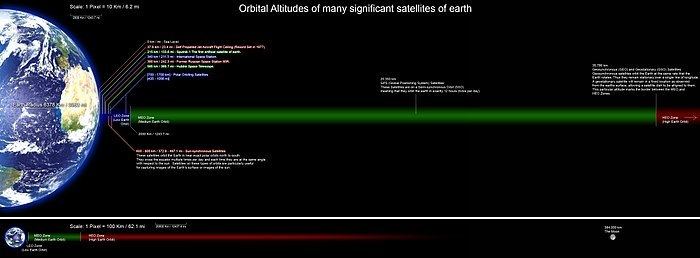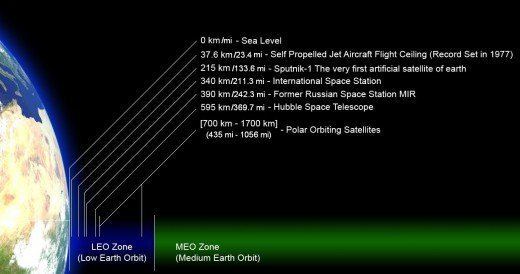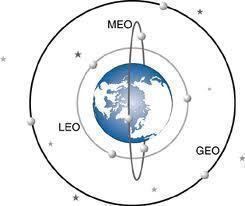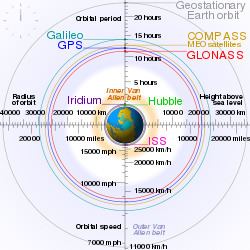 | ||
How low earth orbiting satellite systems work
A low Earth orbit (LEO) is an orbit around Earth with an altitude between 160 kilometers (99 mi) (orbital period of about 88 minutes), and 2,000 kilometers (1,200 mi) (about 127 minutes). Objects below approximately 160 kilometers (99 mi) will experience very rapid orbital decay and altitude loss.
Contents
- How low earth orbiting satellite systems work
- Low earth orbit
- Orbital characteristics
- Use of LEO
- Examples
- Space debris
- References

With the exception of the 24 human beings who flew lunar flights in the Apollo program during the four-year period spanning 1968 through 1972, all human spaceflights have taken place in LEO or below. The International Space Station conducts operations in LEO. The altitude record for a human spaceflight in LEO was Gemini 11 with an apogee of 1,374.1 kilometers (853.8 mi). All crewed space stations to date, as well as the majority of satellites, have been in LEO.

Low earth orbit
Orbital characteristics

Objects in LEO encounter atmospheric drag from gases in the thermosphere (approximately 80–500 km up) or exosphere (approximately 500 km and up), depending on orbit height. Due to atmospheric drag, satellites do not usually orbit below 300 km. Objects in LEO orbit Earth between the denser part of the atmosphere and below the inner Van Allen radiation belt.

The mean orbital velocity needed to maintain a stable low Earth orbit is about 7.8 km/s, but reduces with increased orbital altitude. Calculated for circular orbit of 200 km it is 7.79 km/s and for 1500 km it is 7.12 km/s. The delta-v needed to achieve low Earth orbit starts around 9.4 km/s. Atmospheric and gravity drag associated with launch typically adds 1.3–1.8 km/s to the launch vehicle delta-v required to reach normal LEO orbital velocity of around 7.8 km/s (28,080 km/h).

Equatorial low Earth orbits (ELEO) are a subset of LEO. These orbits, with low inclination to the Equator, allow rapid revisit times and have the lowest delta-v requirement (i.e., fuel spend) of any orbit. Orbits with a high inclination angle to the equator are usually called polar orbits.

Higher orbits include medium Earth orbit (MEO), sometimes called intermediate circular orbit (ICO), and further above, geostationary orbit (GEO). Orbits higher than low orbit can lead to early failure of electronic components due to intense radiation and charge accumulation.
Use of LEO
Although the Earth's pull due to gravity in LEO is not much less than on the surface of the Earth, people and objects in orbit experience weightlessness because they are in free fall.
A low Earth orbit is simplest and cheapest for satellite placement. It provides high bandwidth and low communication time lag (latency), but satellites in LEO will not be visible from any given point on the Earth at all times.
Examples
Space debris
The LEO environment is becoming congested with space debris due to the frequency of object launches. This has caused growing concern in recent years, since collisions at orbital velocities can easily be dangerous, and even deadly. Collisions can produce even more space debris in the process, creating a domino effect, something known as Kessler Syndrome. The Joint Space Operations Center, part of United States Strategic Command (formerly the United States Space Command), currently tracks more than 8,500 objects larger than 10 cm in LEO. However, a limited Arecibo Observatory study suggested there could be approximately one million objects smaller than 2 millimeters, which are too small to be visible from Earth-based observatories.
